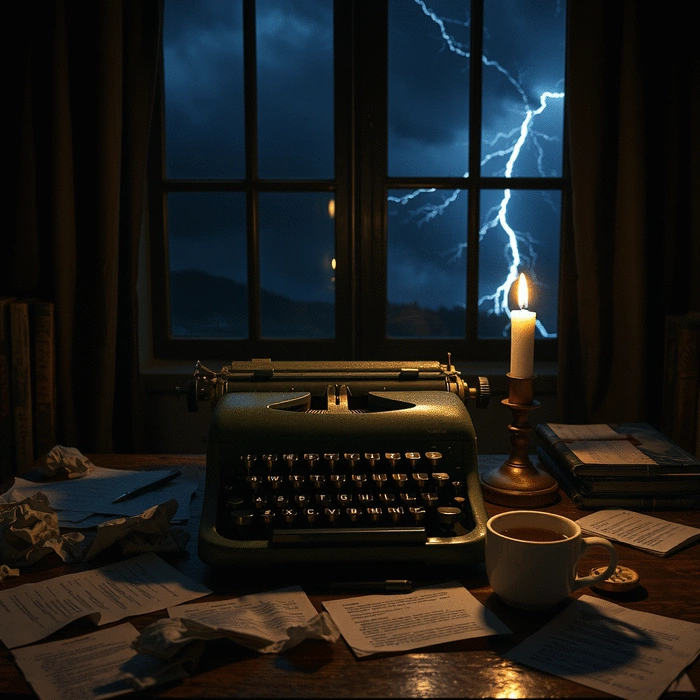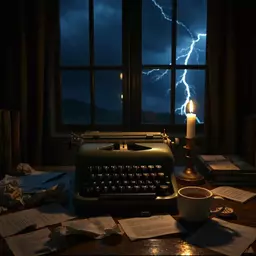Gradual Tension Buildup
Pace your narrative to organically increase suspense.
Subscribe for essential tips and resources to elevate your storytelling journey.
Posted on: 2025-11-24
By: Livia Galloway
Have you ever found yourself lost in a book, heart racing, as you flip through pages in anticipation? That’s the power of suspense in storytelling! It’s a vital element that keeps readers engaged and craving more. In this article, we’ll explore how to harness that power in your own writing.
Essential strategies to enhance your storytelling and keep readers engaged. For more comprehensive insights into various narrative approaches, consider exploring different types of storytelling techniques.
Pace your narrative to organically increase suspense.
Use these elements to keep readers guessing!
Leave readers wanting more at the end of each scene.
Create emotional stakes that resonate with your audience.
Incorporate internal and external conflicts to drive tension.
When it comes to storytelling, tension and suspense are like the heartbeat of your narrative. They keep readers engaged, continuously turning pages, eager to uncover what happens next. Just think about your favorite thrilling book or movie—what kept you on the edge of your seat? That's the magic of well-crafted suspense!
Understanding the importance of these elements is essential for any writer. At Fiction Flourish, I often emphasize the need for tension to create stakes that matter to your characters and, by extension, to your readers. When your audience feels the weight of uncertainty and anticipation, they become more invested in your story's outcome!
Tension and suspense are not just fancy terms in writing; they are critical tools that bring your story to life. Tension is the sense of pressure that builds as your plot unfolds. It can stem from conflicts, character dilemmas, or impending disasters that loom over your characters. Suspense, on the other hand, is the feeling of uncertainty about what will happen next. When combined effectively, these elements create an engaging experience that keeps readers hooked.
Consider employing the following strategies to enhance tension and suspense in your writing:
These techniques not only strengthen your narrative but also encourage readers to invest emotionally in your characters and their journeys. Every successful writer knows that keeping readers guessing is the name of the game! For more on developing your plot, check out these plot development tips for beginners.
To craft compelling suspense, it’s vital to define a few key concepts. First, let’s talk about emotional stakes. This term refers to what your characters stand to gain or lose in a situation. When readers see characters facing real consequences, they feel a stronger connection to them.
Next, character empathy plays a significant role in how readers engage with your story. If readers can relate to your characters’ fears, desires, and motivations, they are more likely to care about the suspenseful situations they encounter. You can build empathy by developing well-rounded characters with flaws and strengths, which is something I focus on in my workshops at Fiction Flourish.
By understanding these terms, you can weave them into your narrative, creating an intricate web of suspense that captivates your readers from start to finish.
Now that we've discussed the fundamentals, let’s dive into some effective techniques for building tension in your story! Suspense doesn’t just appear magically; it requires careful planning and execution. You'll want to master the art of pacing your narrative to ensure that tension builds gradually, making each twist and turn feel earned.
Incorporating techniques like foreshadowing and misdirection can also significantly enhance the suspense. Foreshadowing hints at future events, while misdirection keeps readers guessing about what really matters. Together, they create an intricate tapestry of intrigue that keeps your audience engaged. These elements are key to enhancing plot depth with foreshadowing.
Remember, building tension is a skill that comes with practice. So, keep experimenting and allow yourself to enjoy the process of creating suspenseful narratives!
Here's a brief recap of the key points discussed so far:
As we wrap up our deep dive into the world of suspenseful writing, let's revisit some of the key techniques that can enhance your storytelling. These methods are not just tools; they’re the building blocks of a gripping narrative that keeps readers on the edge of their seats! Remember, the goal is to craft scenes that captivate your audience and make them crave the next chapter.
Here’s a quick rundown of the essential techniques we've discussed:
Each of these techniques plays a vital role in crafting narratives that are not only engaging but also emotionally charged, allowing readers to connect deeply with your characters and their journeys. So, as you write, keep these strategies at the forefront of your mind to elevate your storytelling!
Now that you have a toolkit filled with suspense techniques, it’s time to put them into action! Don't hesitate to experiment with these strategies in your next writing project. Writing can feel a bit daunting, especially when you’re trying to build suspense, but remember, practice makes progress! You might even find that your original ideas flourish in ways you never imagined.
Why not start by choosing one of the techniques we've covered and implementing it in your next scene? Whether it's introducing a ticking clock or using compelling dialogue to create tension, I’m confident that you’ll see the positive impact on your narrative. Embrace the process, and allow your unique voice to shine through!
To solidify your understanding, let’s look at some successful suspenseful narratives that exemplify these techniques. For instance, consider novels like The Girl with the Dragon Tattoo by Stieg Larsson or Gone Girl by Gillian Flynn. Each of these stories skillfully weaves tension through pacing, unexpected twists, and relatable characters. Here’s what makes them stand out:
Analyzing these examples can inspire you to incorporate similar elements into your storytelling. So, take a moment to read or revisit some of your favorite suspense novels—what techniques do they use? How can you adapt those elements into your own writing? For more on creating compelling characters, explore crafting complex characters made simple.
I’d love to hear about your experiences with creating tension in your plots! Have you tried any of the techniques we've discussed? How did they work for you? Feel free to share your feedback in the comments or connect with me over at Fiction Flourish. Sharing our journeys can spark creativity and help us all grow as writers. Let’s build a supportive community where we can learn from one another and enhance our storytelling skills together!
Remember, suspense is not just about keeping readers on the edge of their seats; it’s about crafting narratives that resonate emotionally. So go ahead—embrace the challenge, and watch your stories come to life! If you're looking for more guidance on narrative arcs, you might find this article on crafting a compelling narrative arc helpful.
Here is a quick recap of the important points discussed in the article:

 Have you ever found yourself lost in a book, heart racing, as you flip through pages in anticipatio
Have you ever found yourself lost in a book, heart racing, as you flip through pages in anticipatio
 "Antagonists are not merely obstacles; they are the catalysts for character growth and narrative dep
"Antagonists are not merely obstacles; they are the catalysts for character growth and narrative dep
 Did you know that effective storytelling can not only captivate your audience but also improve your
Did you know that effective storytelling can not only captivate your audience but also improve your